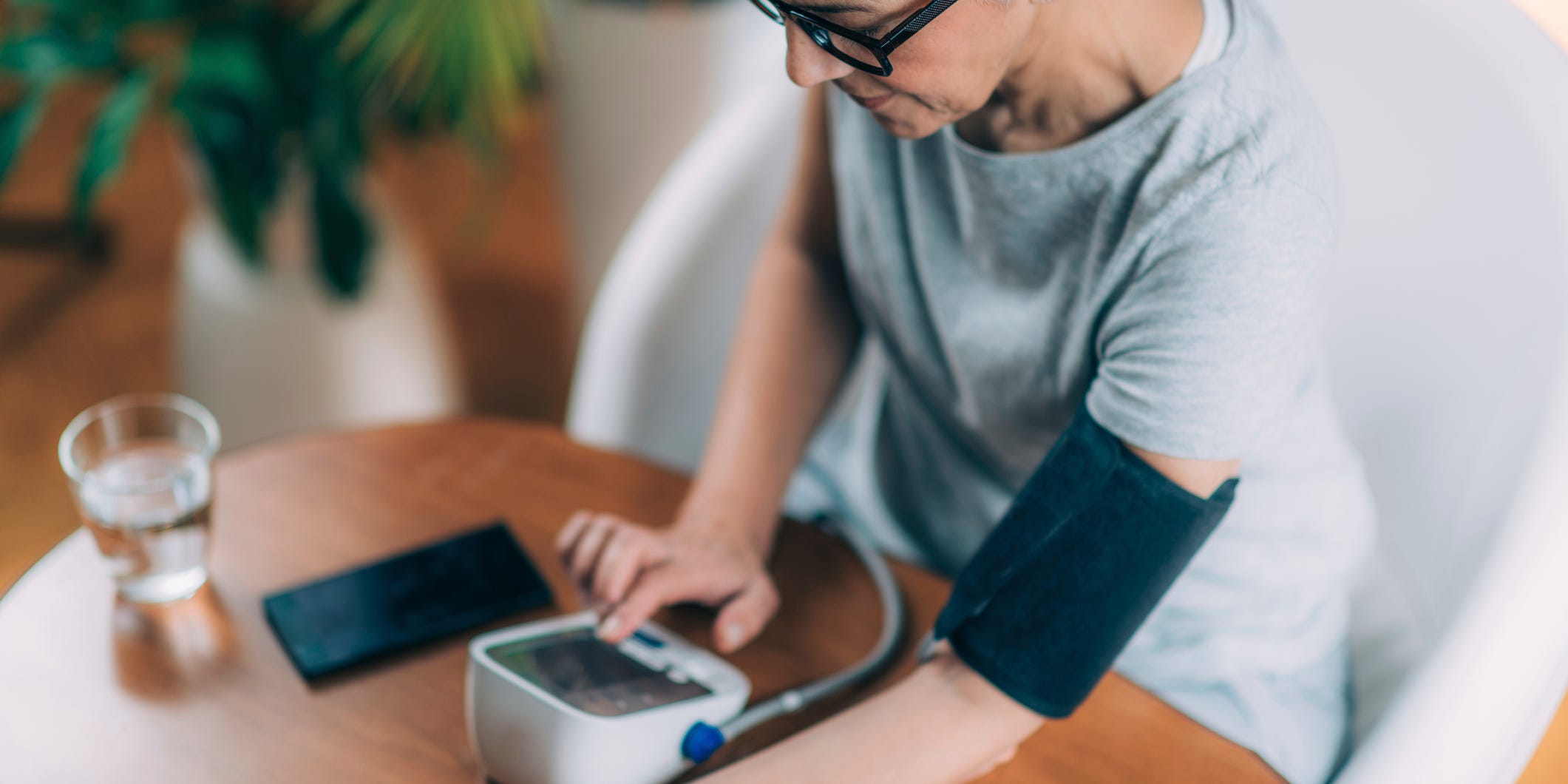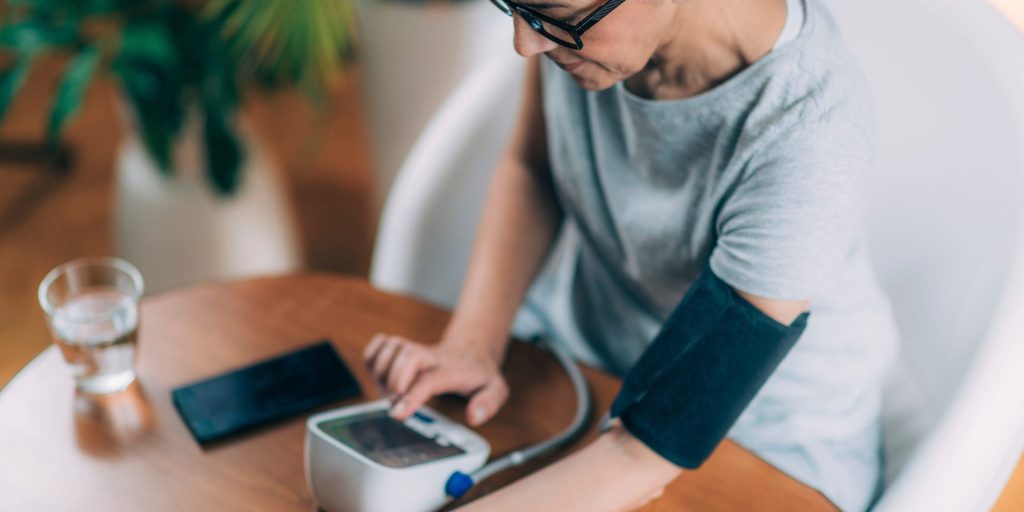
MICROGEN IMAGES/SCIENCE PHOTO LIBRARY/ Getty Images
- While having high blood pressure isn't good, low blood pressure isn't necessarily dangerous.
- However, symptoms like nausea and blurred vision alongside low blood pressure are red flags.
- Low blood pressure can be caused by dehydration, pregnancy, diabetes, and certain medications.
- Visit Insider's Health Reference library for more advice.
Fatigue, blurred vision, and lightheadedness are just some of the common symptoms of low blood pressure, aka hypotension. It usually occurs when your blood pressure reading is lower than the healthy range of 90/60 to 120/80 mm Hg. However, what's considered low for one person might be normal for another.
"Low blood pressure is really relative to what a person's blood pressure normally is. There are some patients whose blood pressure is normally 90/60, and they do not have any symptoms, so this would not be deemed low blood pressure for them," says Joyce Oen-Hsiao, MD, director of clinical cardiology at Yale Medicine and assistant professor of clinical medicine at Yale School of Medicine.
Blood pressure normally fluctuates throughout the day depending on stress levels and dietary choices, but conditions like pregnancy, dehydration, and blood loss can cause blood pressure to become lower than usual.
Learn about the symptoms and causes of low blood pressure, and know when you should seek medical attention.
Severe hypotension, or having dangerously low blood pressure levels, can cause the body to go into shock where the brain and organs can't function properly. It can manifest additional symptoms, such as:
Symptoms of severe low blood pressure (hypotension):
- Shallow breathing
- Weak and rapid pulse
- Cold, clammy skin
- Confusion
- Pale/whitish skin tone
What causes low blood pressure?
Symptoms of low blood pressure are driven by poor blood flow, says Clyde W. Yancy, MD, MSc, chief of cardiology at Northwestern University Feinberg School of Medicine and associate director of the Bluhm Cardiovascular Institute of Northwestern Memorial Hospital.
"Patients generally don't feel well when their pressure is low, and usually need to sit or lay down in order to feel better," says Oen-Hsiao.
According to Oen-Hsiao, your blood pressure may drop if you haven't eaten or are dehydrated, or you accidentally took your medication twice. Low blood pressure may also be a symptom of underlying medical conditions such as anemia, so your health provider may perform blood tests to check.
In general, "patients [who are] most likely to experience low blood pressure are older patients over 65 years, patients who have nervous system issues - like diabetic peripheral neuropathy or Parkinson's - and some patients who get hemodialysis [a treatment where a machine removes waste from the blood]," says Oen-Hsiao.
What is the lowest blood pressure that is safe?
Low blood pressure on its own is not life-threatening. So, if you have a blood pressure reading that's lower than normal, but you feel alright, then you don't need to worry.
"The lowest blood pressure that is considered 'safe' is a blood pressure where the patient doesn't have symptoms such as dizziness, light-headedness, and almost passing out," says Oen-Hsiao.
Insider's takeaway
Low blood pressure or hypotension is generally characterized by a reading below 90/60 mm Hg. You should keep track of what your normal blood pressure is so you can recognize when it dips. Blurred vision, lightheadedness, and nausea are common symptoms, but clammy skin and persistent symptoms that don't improve may warrant a trip to the emergency room.
Blood pressure normally changes throughout the day, but blood loss, dehydration, and certain health problems can result in low blood pressure. If you're having negative symptoms of low blood pressure, you can raise your blood pressure back to normal by drinking more water, increasing your sodium intake, or treating the underlying medical condition that caused low blood pressure in the first place.
"The best way to treat low blood pressure is to make sure that you sit or lay down. This helps to get as much blood up to the brain as possible," says Oen-Hsiao. "If your symptoms do not go away in an hour after resting and drinking water, call your doctor."
